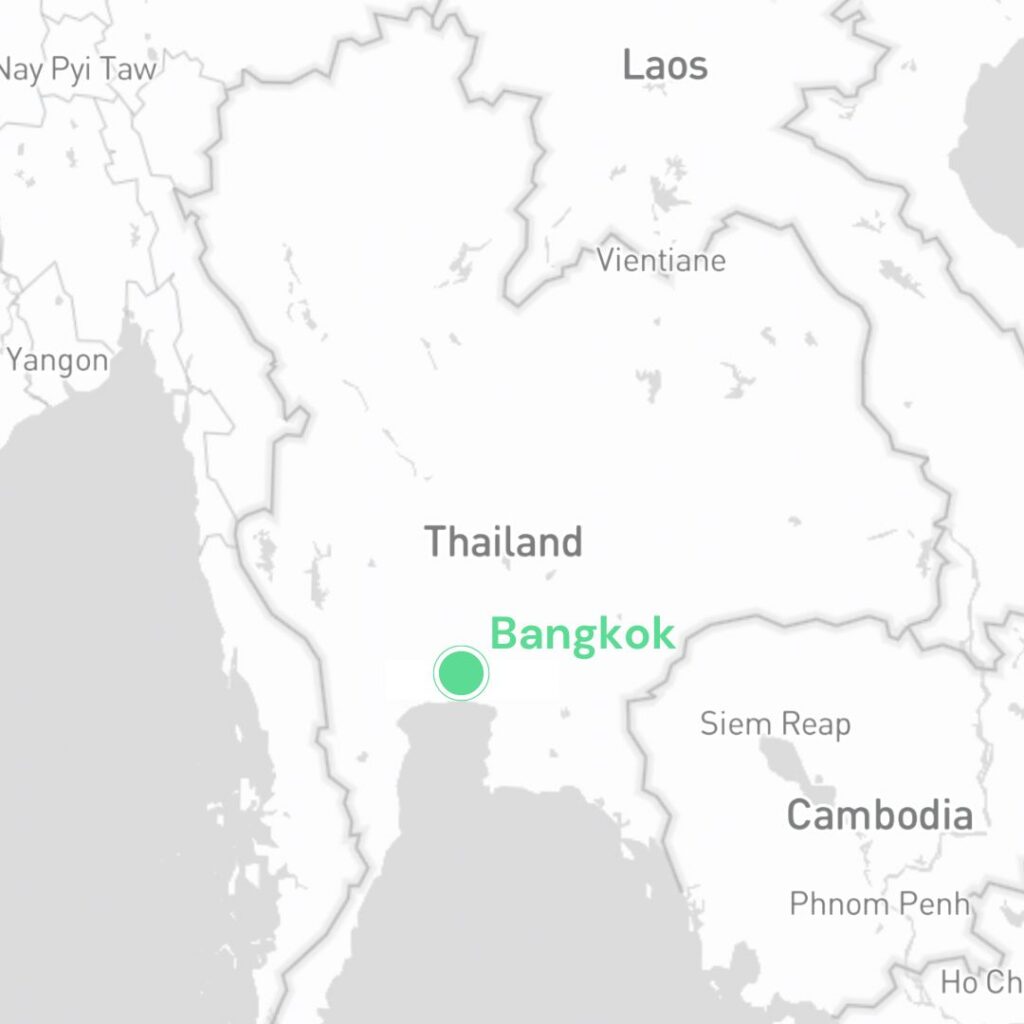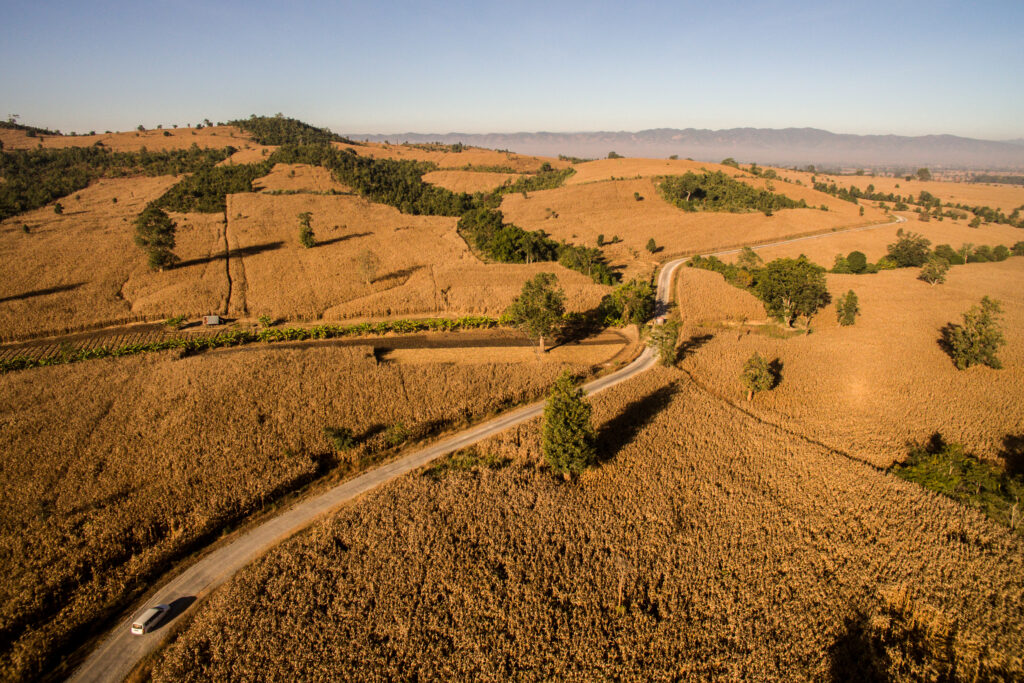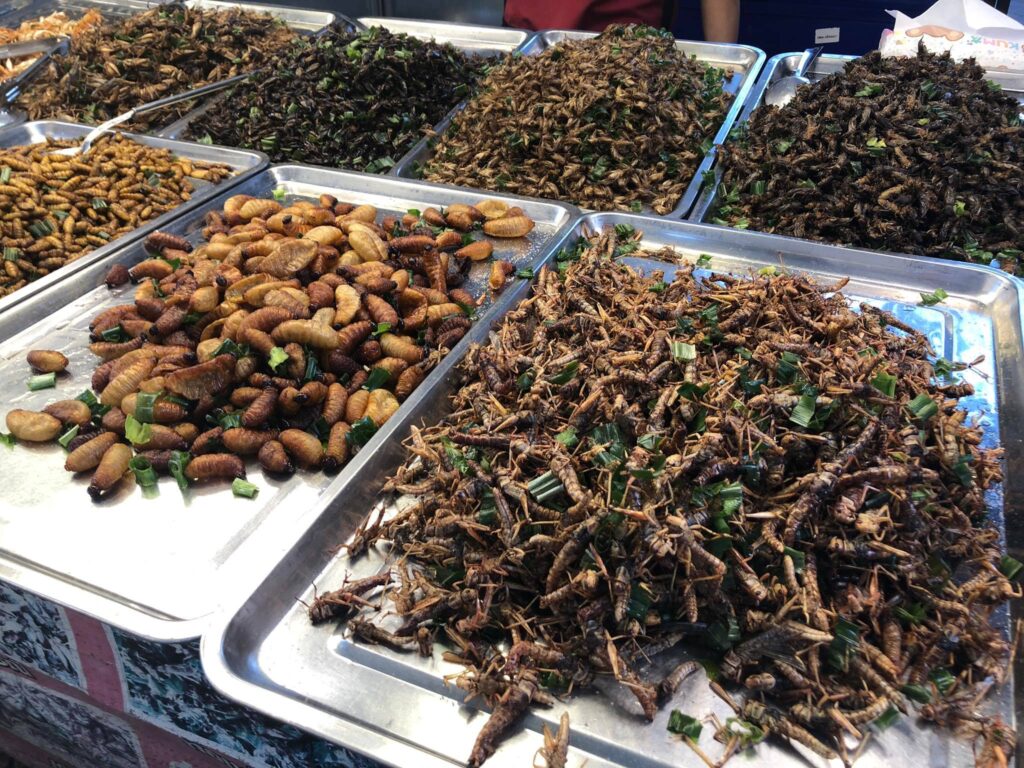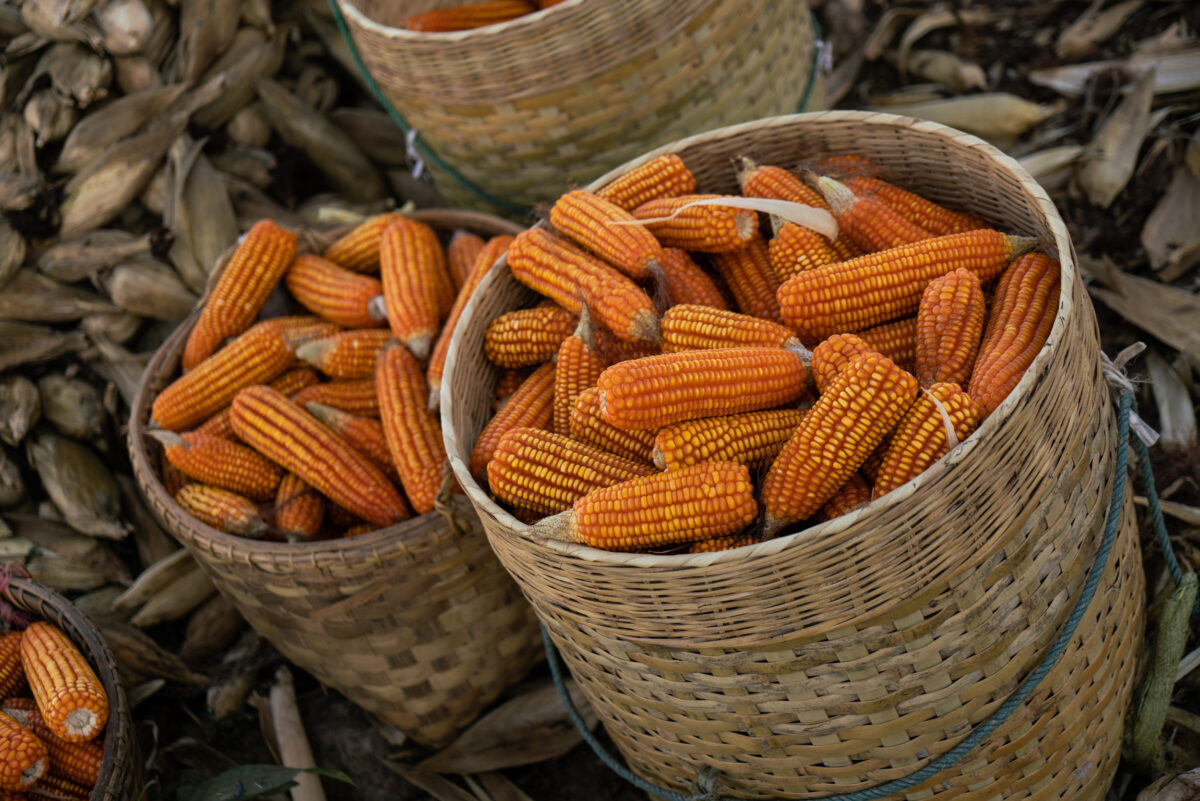BANGKOK, THAILAND – Alternative meat made from plant-based products may be a good idea, but environmentalists have warned that much more needs to be done to ensure sustainability in our food system, in Thailand and throughout the world.
Alternative meat products, either derived from plant-based or animal cell cultivation, have been perceived as a promising new food innovation that can reduce the environmental impacts from meat production, while also improving the sustainability of our global food system.

The alternative meat market in many countries has grown rapidly in recent years. Some of this was driven by studies that pointed out that alternative meat had a much smaller environmental footprint than products sourced from livestock.
The Global Agricultural Information Network’s report concluded that there was still plenty of room for the plant-based meat market to expand further, as more investors join this new, flourishing business.
These investors are helping to bring a greater variety of products to the market, which in turn increases the availability and diversity of plant-based meat products and makes plant-based meat more accessible to consumers beyond environmentally conscious groups.
This promising outlook gives many people high hopes that alternative meats can help solve the problems of the global food system.
However Witoon Lianchamroon, the director of the BioThai Foundation, argued that the issues with the food system are far more complicated than the simple substitution of protein sources.
“It is clear that increasing livestock farming to mass producing animal meat products will cause even worse problems for the planet. I agree that replacing meat with alternative substitutes from plants is a logical choice for the current situation,” he said.
“But the real problem is not just about meat, it is the industrialized food production system as a whole.”
Hidden problems under green labels
The Food and Agriculture Organization’s (FAO) report projects global meat consumption over the next decade will increase by 15% by 2031 in relation to estimated population growth of 11% during the next decade.
It’s worth taking a look back at the history of food production. To feed the population, humans initiated industrial-intensive farming techniques in the developing world known as the “Green Revolution”, starting in the mid-20th century. This completely transformed not only the way food is produced in Thailand, but all of humanity.
This technical breakthrough saved humans from famine and death, while skyrocketing global food production rose by up to 44% since the 1960s.
This was made possible with the introduction of heavily mechanized farming practices and the cultivation of single types of hybridized high-yield cash crops on large swaths of consolidated farmland.
This, combined with the utilization of newly invented agricultural innovations at the time, such as synthetic fertilizers, pesticides and herbicides, were game changers.
Although the Green Revolution led humanity to unlock its food production capacity and get higher yields, its environmental costs have been dire. This is especially true when one considers the impacts of meat production, which is by far the sector that consumes the most energy and natural resources per resulting calorie.
According to Greenpeace, global meat production has caused significant impacts that threaten the stability of the Earth’s systems, as there are very high demands for land and resources throughout the entire production chain of the livestock sector.
Some 77% of global farming land (about 40 million square meters) is dedicated to animal grazing and crops for animal feed, while livestock consumes about 2,422 cubic gigameters of water annually.
Livestock production also contributes 53% to the overall greenhouse gas (GHG) emissions from the agricultural sector, especially in the form of methane, which is 25 times more potent than carbon dioxide and further warms the Earth. It is also responsible for releasing nitrogen and phosphorus pollution that affect 78% of global ocean and freshwater ecosystems.
In comparison, the cultivation of high-protein crops for human consumption, such as soybean and legumes, produces lower environmental footprints, as the statistical analysis by Our World in Data show.
For every 100 grams of plant-based protein, such plants require only 2.1 square meters of land and 93 liters of water, while the carbon emissions from this amount of plant-base protein production amount to about 1.6 kilograms of CO2 equivalent.
According to the Good Food Institute, about nine in 10 plant-based meat products in the United States use soybean as the main ingredient, about the same ratio as in Thailand. Furthermore, 14 plant-based meat brands from a total of 17 surveyed brands were made from soybeans.
“Even though the environmental footprints from plant-based meat production is dwarfed in comparison by the footprints of animal products, they are still not entirely free from environmental harms,” said BioThai’s Witoon.
“This is due to the fact that the major ingredients of most plant-based products, notably soybeans, originate from the industrial farming system.”
He explained that the methods used in industrialized large-scale monoculture farming – which requires the intensive use of agrochemicals such as synthetic fertilizers, herbicides and insecticides – is applied to plants used for plant-based meat products.

A number of records show the surge of agrochemical contamination, deforestation and biodiversity loss in areas where industrial monoculture farming was introduced.
Soil fertility and ecosystems are gradually degrading due to the buildup of agrochemical contamination in soil and water. This eventually pushes farmers to rely on more and more chemical fertilizers and pest killers to maintain the productivity of their farms.
“Plant-based hamburger looks green and good, but it will not help us solve the problems of the food industry,” said Witoon.
Sustainable sources of plant protein
Soy from industrial farms is the main source of the plant protein material for most plant-based meat products. It is also an integral feedstock in livestock production, meaning that intensive soybean cultivation is an inseparable part of meat’s serious problems.
According to a study by the University of Oxford’s Food Climate Research Network, more than three-quarters of the world’s soybean crop is fed to livestock. Less than 7% of the soybean crop is made into plant-based food for humans.
The study also revealed that as the global demand for animal protein has gradually risen in recent decades, so has the need for more soy-based animal feed.
This dynamic has led to a major expansion of soybean plantations, especially in South America, where the areas for soybean farming have grown more than 200 times since the 1960s and led to extensive deforestation in the Amazon rainforest.
The Nature Ecology & Evolution Journal highlighted the consequences of deforestation, which include major biodiversity loss, substantial greenhouse gas emissions from forest fires and serious threats to local communities and indigenous people.
“Since Thailand is another country that relies on imported soybeans, as the domestic soybean production is very low and not enough to supply the soybean demand within the country, we can hardly deny the connection of our plant-based meat’s soybean supply to the pernicious system that cause environmental destruction and serious human rights violations in the Amazon forest,” Witoon said.
According to Thailand’s Ministry of Commerce, as of July 2022, Thailand needed to import between three and four million tons of soybean annually due to an insufficient domestic supply. Nearly three quarters of all imported soy comes from Brazil, while the remaining quarter comes from the United States.
To ensure more sustainability in plant-based meat supply chains, Witoon suggested meat businesses in Thailand look to other plants instead of imported soybeans.
“Thailand is blessed with very rich biodiversity. Our country not only has a high diversity of unique plant and animals in nature, but our farmlands also have varieties of local grains and food crops,” he said.
“We have various local types of rice, grain, legumes, nuts and other food crops which can be found in the traditional farming communities throughout the country. Many of these local plants are rich in protein and can be processed as plant-based meat.”
Winged bean (Psophocarpus tetragonolobus) is one of the local high-protein plants, on par with soy, that has great potential for making a primary starting material for plant-based meat production.
A 2021 study published by the Highland Research and Development Institute (HRDI) found that in the vicinity of six northern provinces of Thailand alone, six local high-protein legume species were identified and cultivated by highland indigenous communities for their diets.
Another major asset of these native local-grown protein crops is their ability to survive and grow in the local environments without chemical applications and extensive exploitation of natural resources.
However, these crucial agrobiodiversity resources are vanishing, as many farmers abandon native seeds and opt for cash crops.
“Industrial farming is no longer a viable way for producing food anymore. Not only is this farming method seriously harmful to nature – the smallholder farmers are also unjustly taken advantage of by working in contract farming,” said Witoon.
“This extremely resource-intensive food production system is actually making us more vulnerable to food insecurity, so the one way out from this vicious cycle is to break free from industrial agriculture.”
Nature the solution to food insecurity
One way to break away from industrial agriculture has been pioneered on a farm in northern Thailand.
Saranarat Kanjanavanit, a former Secretary-General of the Green World foundation, said there is the need to re-embrace regenerative and traditional ways of farming that understand and respect nature and ecosystems as the way forward to build a more sustainable food system.
“Unlike the modern way of industrial farming that seeks to use technology such as synthetic agrochemicals or genetically modified crops to beat nature, I propose that we have to turn toward eco-agriculture, which aims to work in cooperation with the ecosystems around us. This approach is to ensure a safe and sustainable way of feeding the world,” she said.

With her motivation and expertise in the field of ecology and environmental conservation, Saranarat has been spending time conserving the Nunienoi-area wetlands and starting an eco-farm of the same name on her private land in Chiang Dao district in Thailand’s northern Chiang Mai province.
The first major task in developing her farm was to restore the ecological health and biodiversity of her land, which had been used for intensive farming for many years.
“Here soil fertility was very low from years of intensive farming, while the natural water source was also contaminated with paraquat, which is a very toxic herbicide. There were also not many insects and wild animals around here due to high toxicity in the environment from heavy chemical use,” she said.
“I faced quite a hard task during the first year trying to detox the land and re-establish wetland ecosystems.”
After much trial and error, Saranarat restored land fertility by using rotation farming techniques. She plants rice during the wet season and then switches to soy, which replenishes nitrogen back into the soil during the dry season.
Apart from cash crops, her farm focuses on varieties that have been variably rotated during different times of the year.
She rearranged part of her farmland to serve as a natural wetland. She also rewilded other areas with native species of flora and fauna to improve ecological health and biodiversity on the farm.
Another important task she has is to examine the farm every day, pulling out invasive weeds by hand, thus adjusting the environmental condition of the farm’s ecosystems to maintain an ecological balance.
In return, she receives ecosystem services from these acts of restoration in the form of increased natural pollination and pest control. During the past three years, many species that have not been seen in this area for a long time have started to return. The farming yield and crop quality are also improving.
“Restoring the ecological health of the ecosystems is very essential for the success of eco-farming, because the essence of this method of farming is to rely on the services of balanced and healthy ecosystems,” she said.
She added that if ecological farming could be established as a new normal for global food production, the big debate on the selection of protein choices would not be such a controversial issue, as the production of either plant-based or animal protein would be on a sustainable path.
Bugs as the food of the future
Not only are the ecological benefits from conserving biodiversity and nature making Saranarat’s organic “polyculture” eco-farming possible, but they also provide many good protein sources such as wild mushrooms and insects.
According to the FAO, edible insects are another promising alternative source of protein. Apart from being a nutritious source of high-quality protein, vitamins and essential amino acids, insects also have high fecundity, high feed conversion efficiency and rapid growth rates, making them an attractive eco-friendly choice of alternative protein.

With the increasing consumer acceptance of edible insects and their high potential to be the novel food for the future, Visit Limlurcha, the president of the Thai Food Processors Association, remarked that edible insects were now becoming the future for Thailand’s food industry.
Considering Thailand’s tropical climate and its rich biodiversity resource base, the country’s Department of Agriculture revealed that more than 50 native species of insects were edible and commonly consumed.
The country is also suitable for farming insects. There are more than 20,000 traditional cricket farms in Thailand capable of producing more than 7,000 tons of the bug annually.
Visit added that Thailand had great potential to be the major insect-based food exporter in the world.
The alternative protein options to help solve climate change and other environmental problems in Thailand and throughout the world are only increasing. It may just require consumers to look in less conventional places.
This story was supported by the Internews’ Earth Journalism Network under the special collaborative project on One Health and meat in the Asia Pacific entitled “More Than Meats the Eye.”
This is the second part of the explanatory series about the potential of a plant-based meat market in Thailand. Find the first part here.





